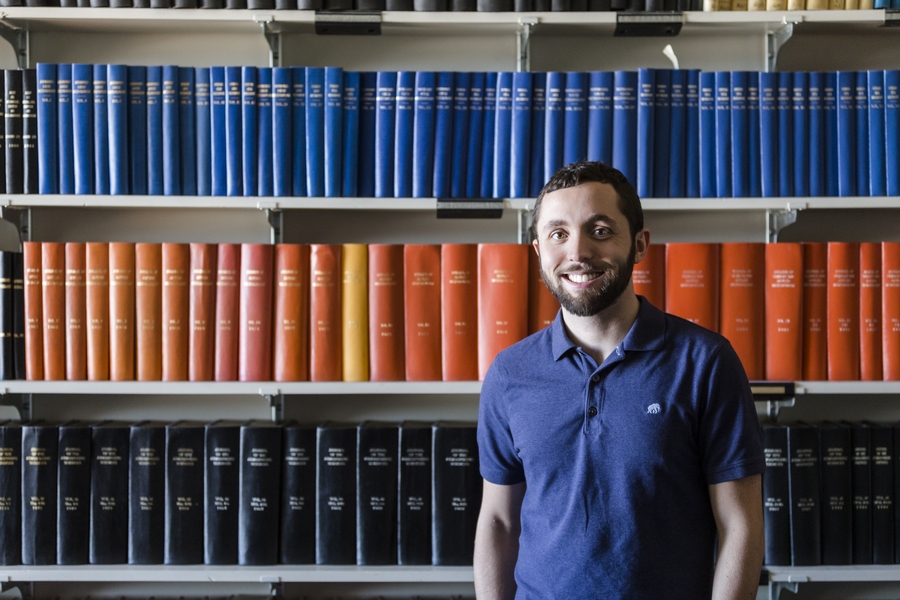The MIT Department of Earth, Atmospheric and Planetary Sciences (EAPS) welcomes exoplanetary scientist Jason Dittmann as one of four inaugural 51 Pegasi b Postdoctoral Fellows announced yesterday by the Heising-Simons Foundation.
Named for the first exoplanet discovered orbiting a sun-like star, the new 51 Pegasi b Fellowships are intended to give exceptional postdocs the opportunity to conduct theoretical, observational, and experimental research in planetary astronomy.
Dittmann will be hosted at MIT by the Seager Group. Led by renowned EAPS and MIT Department of Physics astrophysicist and planetary scientist, Sara Seager, the Class of 1941 Professor of Planetary Sciences, the group’s research focuses on theory, computation, and data analysis of exoplanets.
Central to Dittmann’s work is the belief that to form a deep understanding of new worlds requires that we first understand the stars they orbit.
“Our end goal is to arrive at a point where we can start asking fundamental questions about the composition and dynamics of a planet. But understanding these worlds requires that we first understand their host stars,” Dittmann explains.
Dittmann’s focus is on small and cool stars, the most abundant type in the Milky Way galaxy. Such stars make the best targets when searching for habitable exoplanets using parallax techniques — applying multiple viewpoints to measure the distances to a large number of nearby stars, and then using those measurements to accurately determine the physical attributes of the stars and the planets that may orbit them.
Over the next three years, Dittmann will be seeking to overcome present barriers to understanding nearby stars through refinement of current observational tools and techniques to better characterize a star’s physical attributes and detect any new worlds orbiting them. “In my work, I will be pushing to increase instrument sensitivity and resolution,” he says. “With better sensitivity comes the ability to detect new and interesting objects.”
In particular, Dittmann hopes to be able to demonstrate that these small stars have a similar composition to our sun, lending an important clue to what makes a star likely to have planetary companions. Utilizing new analysis techniques, while leveraging the advanced exoplanet detection and analysis technology and expertise to be found at MIT, Dittmann will be looking to uncover the closest exoplanets outside of our solar system that look like Earth, as well as those that look like Mars and Venus, and investigating the chemical makeup of their atmospheres.
Reflecting on how characterizing the atmospheres of exoplanets can lead to more knowledge of physical, and potentially biological, processes outside of our solar system, Dittmann says, “If we can confirm that a planetary atmosphere is influenced by biology, then that’s a grand slam in my view. In reality, we will likely be arguing about what is in an atmosphere for years — but that’s important, too.”
Dittmann received his PhD in astronomy and astrophysics from Harvard University in 2016. He was appointed to the Pierce Fellowship for astronomy from 2010 through 2013.
The three other 2017 51 Pegasi b Fellows and their host institutions are: Peter Gao (University of California at Berkeley); Katherine de Kleer (Caltech), and Songhu Wang (Yale University).
Each award provides up to $375,000 of support for independent research over three years, and the time and space to establish distinction and leadership in the field, mentorship by an established faculty member at the host institution, and participation in an annual summit to develop professional networks, exchange ideas, and foster collaboration.
EAPS department head Robert van der Hilst, who worked with Department of Physics head Peter Fisher and other faculty members to nominate some extraordinary candidates for the fellowship, is delighted that the Heising-Simons Foundation chose MIT as one of four institutions to host the fellowship: "We are honored to be awarded one of the very first 51 Pegasi b Postdoctoral Fellowships, and look forward to welcoming Jason to MIT. We are sure that his research will have impact on the field of exoplanetary research.”
The Heising-Simons Foundation is a family foundation based in Los Altos, California. The foundation works with its many partners to advance sustainable solutions in climate and clean energy, enable groundbreaking research in science, enhance the education of our youngest learners, and support human rights for all people.






